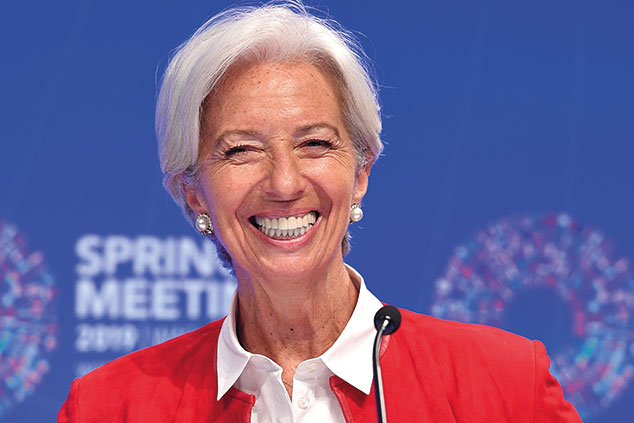
An almost permanent recession. Negative interest rates and a programme of quantitative easing that seems to get less traction with every billion that rolls off the printing presses. You might think that on taking office the new president of the European Central Bank, Christine Lagarde, already had plenty of difficult issues to deal with. And yet she has decided to add to the list by making combatting climate change central to monetary policy at the European Central Bank (ECB).
A new bandwagon
The ECB is reviewing how to incorporate climate change explicitly into its operating mandate so that it affects everything from what bonds or equities it buys to how it funds and tests the stability of the banks. And the ECB isn’t the only central bank going green.
The Bank of England’s Mark Carney has already outlined plans to incorporate the potential impact of climate change in its stress tests of banks and insurers as well as taking steps to reduce its own carbon footprint (although it turns out it would take more than a thousand trees to compensate for all the flights he takes personally). The new governor may well go further.
The Fed held its first conference on climate change last month. Meanwhile, in Sweden the Riksbank has started selling debt from the provinces of Queensland and Western Australia because of their role in coal mining. The trouble is, is that really the right role for a central bank? Sure, the overwhelming scientific consensus is that climate change is a real issue. But there are two big problems with making it a task for central banks.
To start with, it is an extreme example of “mission creep” Tackling climate change may well involve significant changes in the way we live our lives. We might drastically cut down on our use of cars or reorder the way we work so that we travel less and work at home more. We might ban the use of plastics in supermarkets and hand out subsidies for electric cars, impose stiff taxes on air travel, and, at the most extreme level, reorganise the economy so that it consumes far fewer raw materials and creates less waste. Those are all big questions involving tough choices. So surely they should be settled by democratically elected politicians rather than financial technocrats? It is very hard to see what mandate Lagarde or Carney have for that.
Yet another central-bank bubble?
Next, it will create a bubble and encourage a misallocation of resources. One of the main proposals – and the Swedish central bank has already embarked on this – is to use the central bank’s own portfolio of debt, bonds and equities to direct capital to green projects and take it away from companies and regions that generate high pollution. The next step might well be to print money specifically for climate-change projects, a kind of “Green QE”.
And yet surely those projects should pay for themselves? In many cases they already do. Solar energy is now often competitive with coal and oil. Electric cars are already hugely popular. But throwing free capital at the sector will just encourage waste and subsidise projects with no commercial justification. Of all people, a central banker should know the risks of doing that.
Sure, there is some role for a central bank in preserving the environment. It may well be wise to stress test banks and insurers for whether they can cope with extreme climate change, for example, because on some of the doomsday scenarios the costs could be overwhelming. But there is a big difference between that and making it central to monetary policy – especially if that means printing money for green bonds, tilting portfolios to environmental companies, or other forms of intervention in the market. Indeed, it is hard to escape the suspicion that central bankers are simply jumping on a fashionable cause. That is not their real job – and it is not going to end well.